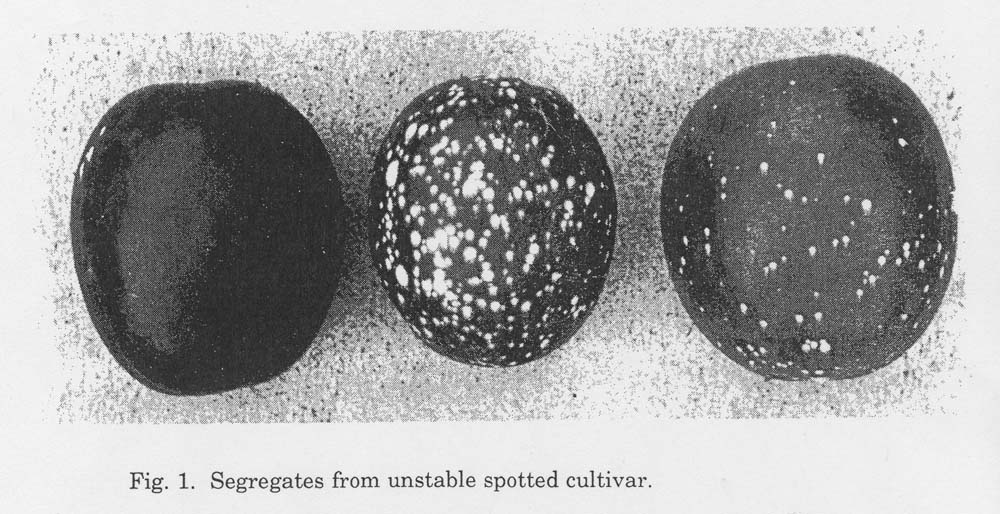Cucurbit Genetics Cooperative Report 15:71 (article 27) 1992
B.A. Murdock and N.H. Ferguson
Departments of Horticulture (1st suthor) and Agronomy (2nd author), Clemson University, Clemson, SC 29634 USA
In many North American localities, a watermelon variant called ‘Sun, Moon, and Stars’ or ‘Moon and Stars’ has been maintained by home gardeners. Its name is derived from the yellow spots which form on its stems, leaves and fruit. These spots are noticeable in some cases on the cotyledons. It does not affect flesh color.
Spotted cultivars have generally been maintained locally by individual growers. In 1989, 18 different spotted cultivars were obtained from growers in the states of Alabama, California, Indiana, Louisiana, Michigan, Minnesota, Missouri, North Carolina, Ohio, Pennsylvania and Tennessee.
It was found that pattern of spotting was consistent within each cultivar. Some cultivars had mostly medium (2 – 6 cm) and large (6 – 15 cm) spots while other cultivars had only small (< 2 cm) spots. Some cultivars had numerous spots while others had very few spots. Several cultivars were unstable for inheritance of the spotting character and segregated for presence of spotting, size of spotting, and intensity of spotting. Segregates from one such cultivar are pictured in Figure 1.
It appears that more than one genetic mechanism is responsible for the spotting found in ‘Sun, Moon, Stars’ and ‘Moon and Stars’ cultivars.
Fig. 1. Segregates from unstable spotted cultivar.
